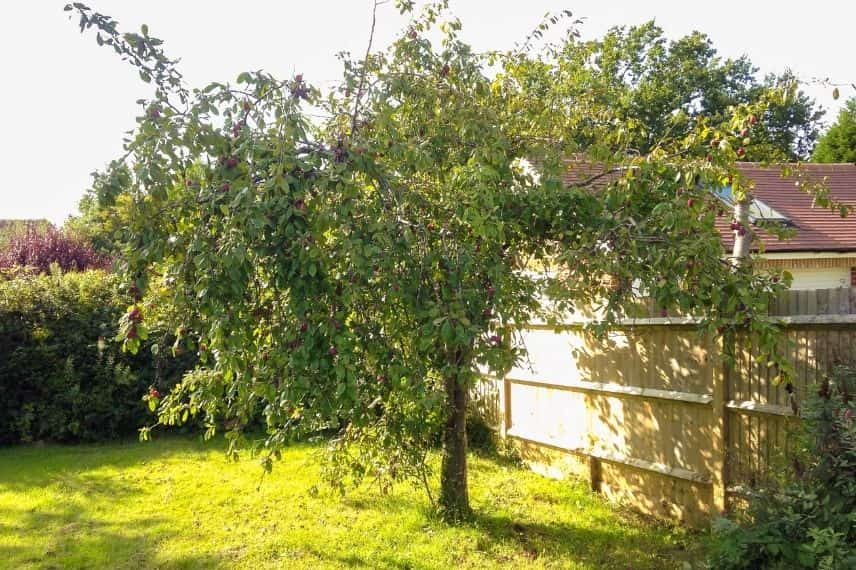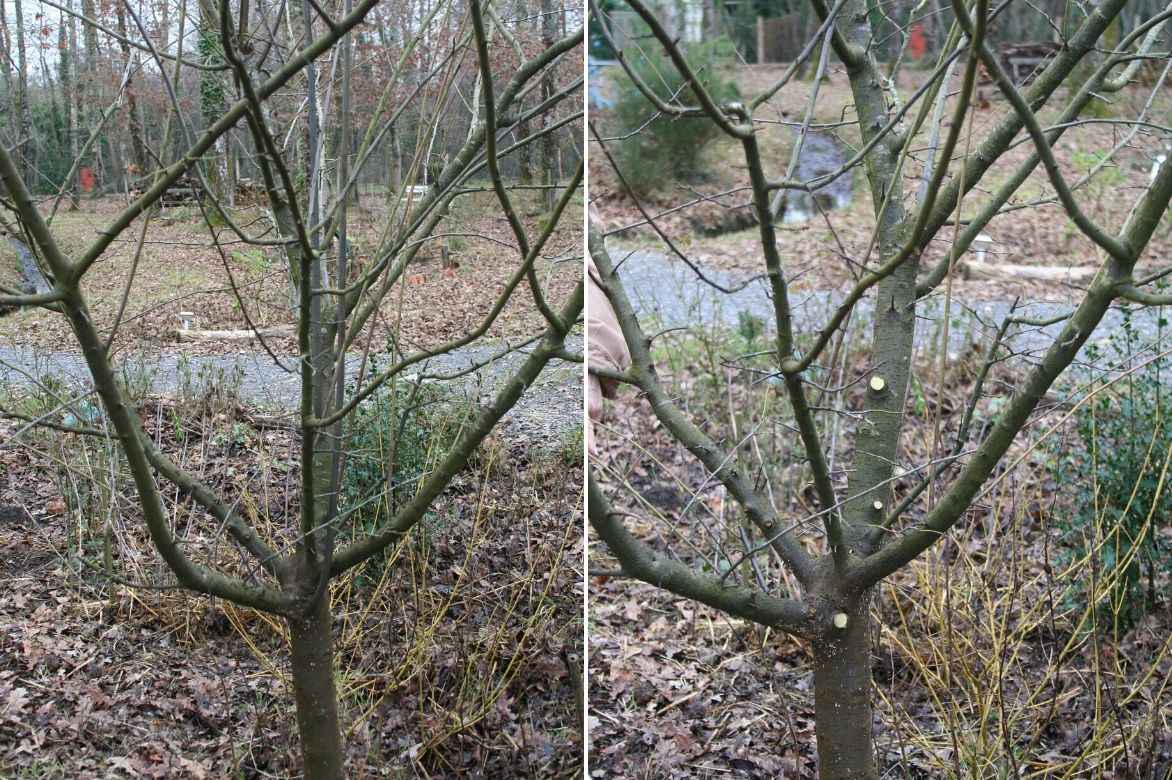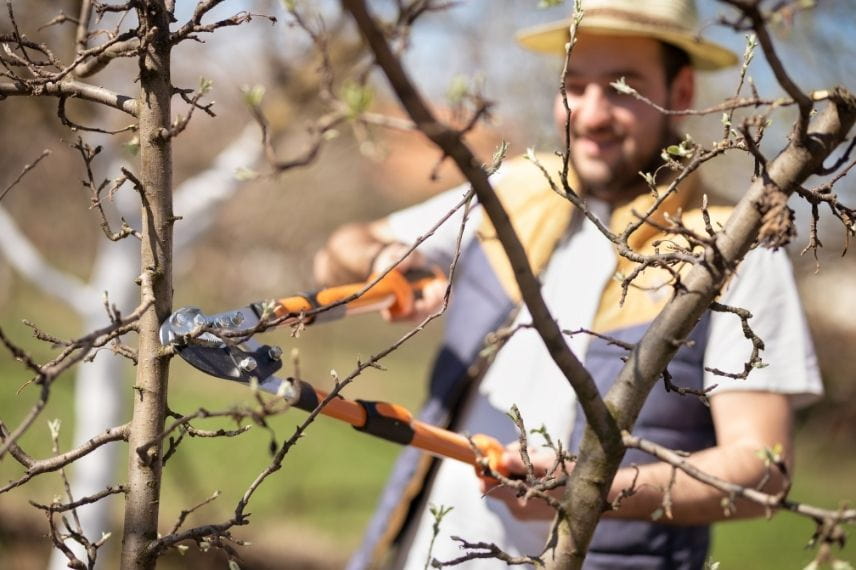Plum tree, a vigorous, easy-to-grow fruit tree if ever there was one, needs pruning to rebalance and restrain its growth. Moreover, its branches can sometimes be brittle in bad weather. That's why pruning, or rather prunings, can prove useful. However, it can be sensitive to overly severe pruning. So winter pruning or fruiting pruning will be fairly light. By contrast, training pruning carried out in the tree's early years will be decisive.

Plum tree is sensitive to pruning wounds, so proceed with caution
We explain when and how to prune plum tree, left untrained or trained as bush, half-standard or standard, to obtain abundant, quality harvests.
Training pruning
Why intervene?
This training pruning is essential on young plum trees during the first 3 to 4 years following planting. During these first years it is not yet productive. It allows giving shape to the plum tree, structuring it and providing a solid, balanced framework. The tree's future, and therefore quality of fruiting, will depend on these annual prunings.

Unpruned plum tree looks unbalanced
This training pruning also aims to promote penetration of air and light into heart of tree. The goal is therefore to make the branches less dense by removing branches or twigs that cross or grow towards the centre. Use the opportunity to remove suckers that grow at base of tree or along trunk.
Which tools to use?
To carry out training pruning on a plum tree, a large pruning shear is sufficient but a pruning saw can also be used. Make sure it is perfectly disinfected with methylated spirits to avoid spreading disease from one tree to another. Also keep tools well sharpened to make clean cuts without tearing bark.
After each branch cut, apply a wound dressing product, carefully covering cut edges. This mastic will help protect plum tree against certain diseases or late spring frosts.
When and how to prune?
Plum tree does not welcome overly severe prunings, so act sparingly and with restraint. Pruning should therefore be minimalist and aim to retain 4 or 5 main scaffold branches angled outwards. First remove shoots that appear dead or diseased. Then remove branches that tangle or intertwine or those growing inward to create a sort of light well. Finish pruning by cutting back shoots that are too low and twigs damaged by frost.

Fruiting pruning of a plum tree
This training pruning is carried out in winter, from November to March, outside periods of frost.
Fruiting pruning
As soon as your plum tree fruits, you can start to carry out this fruiting pruning if necessary. Indeed, on open-grown stone-fruit trees it is not essential. However, if you do not prune from time to time, plum tree will lose energy to foliar production at expense of fruiting. And if you intervene, do so only every 5 to 6 years to avoid causing unnecessary stress to plum tree. As a reminder, plum tree is very sensitive to pruning wounds and in particular to gummosis, which favours development of pests. In any case, always act with restraint!
Objectives of this pruning
This fruiting pruning consists of :
- Remove dead or diseased wood and dry branches
- Cut back outer branches
- Thin and aerate central branches to encourage penetration of light and air
- Maintain plum tree so it retains shape given during training pruning in its early years
- Remove vertical suckers that grow straight up. They are entirely useless as they do not bear fruit.

Fruiting pruning helps to aerate centre of crown
When and how to prune plum tree?
This fruiting pruning is therefore carried out every 5 to 6 years, or more often if your tree has suffered from bad weather (broken branches or branches burnt by frost). Likewise, avoid pruning in a very productive year. Better to wait until following year because, generally, plum trees alternate heavy and light crops every other year.
This pruning is carried out between late autumn and early winter, when sap descends into roots.
Start by cutting back the branches by about thirty centimetres across the whole plum tree. Then tackle centre to cut crossing branches, taking care not to remove last year's wood which will carry next season's fruit.
Use this pruning to inspect plum tree and destroy any remaining fruits, often diseased, left on the tree.































![[pruning_guide plant="prunier"] [pruning_guide plant="prunier" season="winter"]](https://en.promessedefleurs.eu/blogwp/wp-content/uploads/2022/04/tuto-tailler-un-prunier.jpg)
Comments